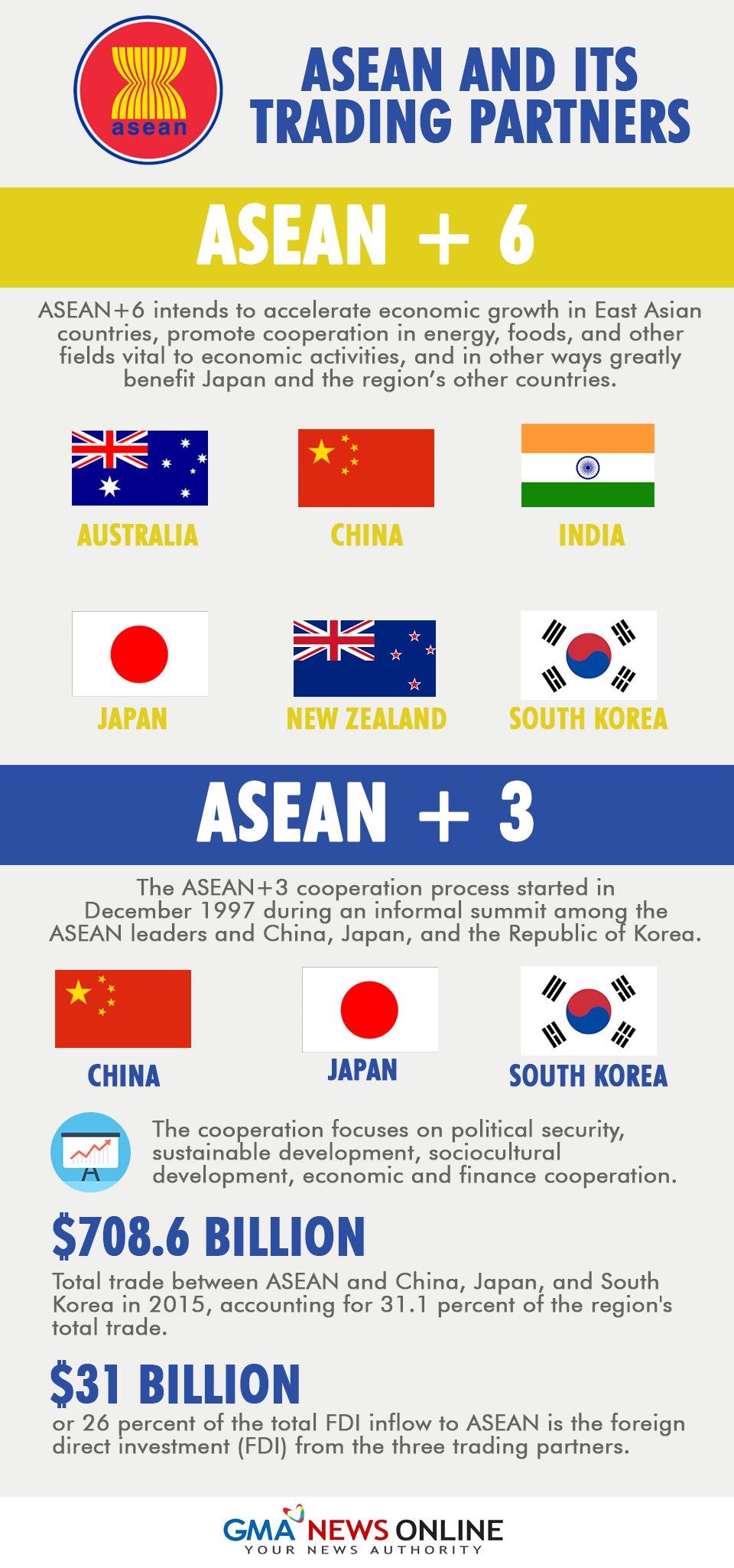Focus on ASEAN+3 and ASEAN+6
World leaders are converging in the Philippines for the Association of Southeast Asian Nations (ASEAN) Summit and Related Meetings.
Established by the "Founding Fathers" Indonesia, Malaysia, Philippines, Singapore, and Thailand on August 8, 1967, the original five-member association was created to promote peace and stability in the region.
The now-10-member regional bloc ASEAN deals with trading partners under the auspices of ASEAN Plus Three (ASEAN+3), and the planned Regional Comprehensive and Economic Partnership (RCEP).
The ASEAN+3 cooperation process started in December 1997 during an informal summit among the ASEAN leaders and China, Japan, and the Republic of Korea.
The cooperation focuses on political security, sustainable development, sociocultural development, economic and financial cooperation.

RCEP
ASEAN is also working to finalize the RCEP, a planned free trade agreement between the member states and six trading partners—Australia, China, India, Japan, Republic of Korea, and New Zealand—the so-called ASEAN+6.
The economic partnership among the 10-member ASEAN plus Australia, China,
India, Japan, New Zealand, and South Korea was established to accelerate economic
growth in East Asian countries, promote cooperation in energy, foods, and
other fields vital to economic activities, and in other ways greatly benefit
Japan and the region’s other countries, according to Shujiro Urata, senior economist and Japan Center for Economic Research professor, Waseda University.
In September, Trade Secretary Ramon Lopez said the RCEP trading partners have agreed to set "more realistic" trade offers for the deal to push through.
He urged the ASEAN to expedite and complete the negotiations by the end of 2017 as the Philippines wanted to achieve significant gains during its hosting of the ASEAN Summit. — With Jannielyn Bigtas, Ted Cordero, and Jon Viktor Cabuenas/VDS, GMA News




